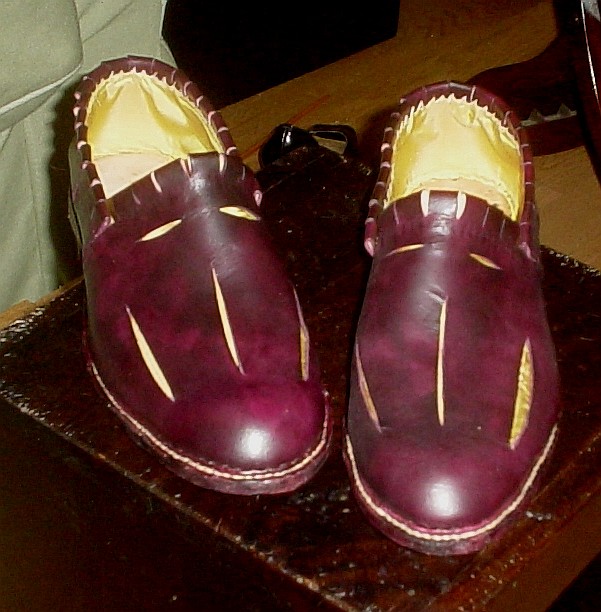 |
A pair of shoes for Bess, again, very similar to Lesson 7: Mid 16th C. Shoes (Stacked Leather). These have pickadils all the way around instead of just on the vamp, and I tried a new technique where I didn’t leave any space between them. I really like the way they look, and will be doing all of my pickadils like this in the future. | |
In other news, and I apologize for being so quiet on the topic, I returned from Williamsburg about a month ago after attending a symposium on Costume accessories. It was a wonderful experience, and I was even able to get some time to pick some of the minds of the very talented cordwainers at Williamsburg. A few of the highlights that I came away with (so as not to give away all of the secrets!), and I will be adding more as I go through my notes:
– Shoes made with the flesh side out and the grain side in (that is, the outside of the animal’s skin is on the inside of the shoe) were quite common. However, you would probably want to use a high quality hide to get a nice smooth surface.
– Working leather wet is usually a preferable alternative to working the leather dry. When wet, the leather is more pliable and resists tearing much better than when dry.
– Always keep your awls polished to a mirror shine – a polish means that you have a smooth surface to bite through your work, and if there is any pitting or marring, it will catch on the leather and make it more difficult.
– Your apron (you have one, don’t you?) should usually go grain side towards you, and flesh side out. The top portion covering your chest should also be made of a thicker, sturdier leather than the rest of it.
– High quality leather makes a HUGE difference in the results of your work. Always work in the best quality leather you can afford to purchase.
– Pine Pitch has an intense smoky smell to it, and is dark and resinous. That’s the stuff you want to mix with Pine Resin (colophony) and maybe some beeswax/tallow to make your coad (shoemaker’s wax). Note that calling shoemaker’s wax “coad” will amuse other 18th C. shoemakers, as it is an archaic term, well out of use by the 18th C. =)